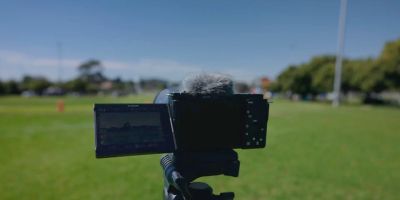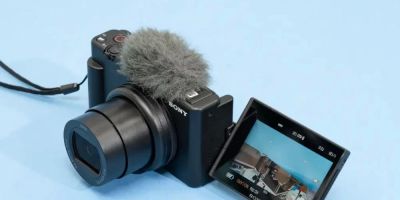- Why Photographing Star Trails and the Milky Way is a Must
- Essential Equipment for Capturing Star Trails and the Milky Way
- How to Prepare for a Star Trail or Milky Way Photo Shoot
- Techniques for Photographing Star Trails and the Milky Way
- Post-Processing Your Star Trail and Milky Way Images
- Real-Life Examples and Tips from Photographers
- Where to Buy Photography Gear and Accessories for Night Sky Photography
Why Photographing Star Trails and the Milky Way is a Must
Photographing star trails and the Milky Way is one of the most mesmerizing and rewarding experiences for any photographer. The night sky offers endless possibilities, capturing not just the beauty of the stars, but also creating long-lasting memories and stunning images that can truly awe viewers. Whether you're an amateur photographer or an experienced pro, shooting these celestial wonders presents a chance to challenge your skills and explore the vastness of the universe in a new way.
For many, photographing star trails and the Milky Way offers a peaceful escape from the hustle and bustle of daily life. It’s about connecting with nature, immersing yourself in the night, and capturing the beauty of our galaxy. The photos you capture can evoke emotions, tell stories, and serve as a reminder of just how small we are in comparison to the vast cosmos.
Essential Equipment for Capturing Star Trails and the Milky Way
Before heading out to capture the stunning beauty of star trails or the Milky Way, it’s important to have the right gear. Unlike regular photography, photographing the night sky requires specific equipment and settings. Here’s a breakdown of the essentials:
1. Camera with Manual Mode
To capture long-exposure shots, you need a camera that allows you to control the shutter speed manually. DSLR or mirrorless cameras are ideal for this type of photography. Cameras that offer a high ISO range and good low-light performance are essential for capturing the details of the night sky without too much noise.
2. A Wide-Angle Lens
A wide-angle lens (between 14mm to 24mm) is perfect for photographing the Milky Way and star trails. This lens allows you to capture a large portion of the sky and keeps the stars in focus while offering sharpness and clarity in the final image.
3. Tripod
Since you will be using long exposure times, a sturdy tripod is essential to avoid any camera shake. The longer the exposure, the more susceptible the camera is to slight movements, which can result in blurry images. A solid tripod will ensure that your camera stays stable throughout the shot.
4. Remote Shutter Release or Timer
A remote shutter release or your camera’s built-in timer will help you avoid touching the camera during the long exposure, preventing any unnecessary vibrations that could blur the photo.
5. Extra Batteries
Long exposure shots can drain your camera’s battery quickly, so it’s always a good idea to bring extra batteries. Cold temperatures, often encountered during night shoots, can also affect battery life, so pack spares to ensure you don’t run out of power midway through your shoot.
How to Prepare for a Star Trail or Milky Way Photo Shoot
Preparation is key when it comes to photographing star trails and the Milky Way. Here are a few essential steps to make sure you’re ready for your shoot:
1. Choose the Right Location
Selecting the right location is one of the most important steps in photographing the night sky. You'll need a place far away from light pollution to capture clear, sharp images of the stars. National parks, rural areas, and remote landscapes are often ideal. Apps like Light Pollution Map and Google Earth can help you find dark sky areas for the best results.
2. Check the Weather
Clear skies are essential when photographing the night sky. Check weather forecasts in advance to ensure there are no clouds or rain. A cloudless night will allow you to see and capture the stars in all their glory.
3. Plan Your Timing
Timing is everything when it comes to photographing the Milky Way. The best time to capture the Milky Way is during the months of April to October, and ideally on nights when the moon is either new or in a crescent phase. Use apps like Stellarium or SkySafari to help you plan your shoot by showing the Milky Way’s position relative to the horizon and helping you find the perfect time to shoot.
4. Bring Proper Clothing and Supplies
Remember that photographing the stars often means spending several hours outside at night, which can get quite cold, even during warmer months. Dress in layers, bring warm clothing, and pack any snacks, water, or other necessities you might need to stay comfortable during your shoot.
Techniques for Photographing Star Trails and the Milky Way
Once you're set up in the perfect location, it's time to start shooting. Here are a few techniques to help you capture stunning star trails and the Milky Way:
1. Long Exposure for Star Trails
To photograph star trails, you’ll need long exposure times. Set your camera to manual mode, use a wide aperture (f/2.8 or lower), and select a low ISO (typically 800-1600). Set your shutter speed to 15-30 seconds and capture multiple images, then stack them in post-processing to create the star trails effect. This technique ensures that the stars leave trails as they move across the sky.
2. Focusing on the Milky Way
When shooting the Milky Way, set your camera's focus to infinity. Use a wide aperture (f/2.8 to f/4) and a higher ISO (1600-3200) to capture the faint light of the galaxy. Keep your exposure time between 15 and 25 seconds to avoid star trailing. A tripod is essential for keeping the camera steady while you take these long exposures.
3. Experiment with Light Painting
If you want to add a creative touch to your photos, consider light painting during the exposure. Use a flashlight or small LED light to illuminate the foreground or add unique light effects to your image. Just be sure the light is subtle enough not to overpower the stars themselves.
Post-Processing Your Star Trail and Milky Way Images
After capturing your star trail or Milky Way images, post-processing is an essential step to enhance the final result. Editing software like Adobe Lightroom and Photoshop can help adjust contrast, brightness, and colors, bringing out the best in your night sky photos.
1. Stacking for Star Trails
To create the stunning effect of continuous star trails, you’ll need to stack multiple images using software like StarStax or Photoshop. This technique combines all your exposures, creating smooth, circular trails that showcase the movement of the stars across the sky.
2. Enhancing the Milky Way
To bring out the best in your Milky Way shots, you can adjust the contrast and saturation to make the colors of the galaxy pop. Use noise reduction tools to smooth out any graininess caused by higher ISO settings. You can also sharpen the stars and enhance the surrounding sky to create a more dramatic effect.
Real-Life Examples and Tips from Photographers
Many professional photographers have shared their experiences and tips for capturing star trails and the Milky Way. One photographer, Sarah, shared her experience shooting the Milky Way in the Atacama Desert. She advised bringing a good-quality wide-angle lens and using a wireless remote to avoid any camera shake during long exposures. “The Milky Way is best captured when there’s little to no light pollution,” Sarah explained, “and being in a remote location allowed me to get the clearest shots.”
Another photographer, Mark, recommended using a fast lens to reduce the exposure time needed for capturing the Milky Way. He also emphasized the importance of planning ahead: “Check your weather forecast and the phase of the moon to ensure optimal conditions for a night shoot.”
Where to Buy Photography Gear and Accessories for Night Sky Photography
If you’re looking to invest in high-quality photography gear for capturing star trails and the Milky Way, look no further than Photo Studio. They offer a wide range of cameras, lenses, tripods, and accessories specifically designed for night sky photography. Whether you’re just starting out or are a seasoned pro, Photo Studio has everything you need to make your celestial photography dreams come true.





